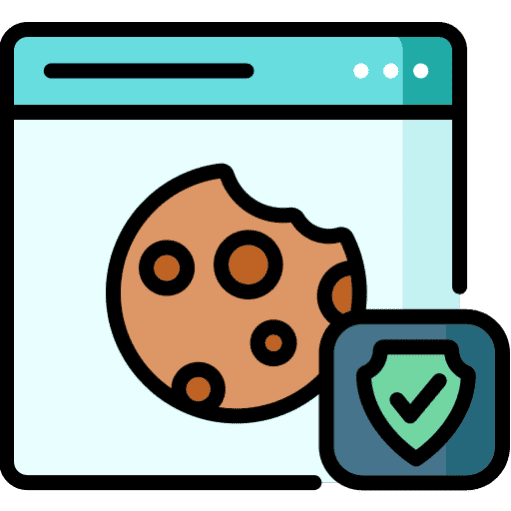Reading is an essential part of our everyday lives, and it is vital to be able to read quickly and effectively. However, the average reading speed for most people is around 200-400 words per minute (wpm).
Fortunately, with the help of speed reading techniques, it is possible to double or triple this speed without compromising comprehension. In this article, we will explore how you can improve your reading skills so that you can read faster and retain more information.
“Not all readers are leaders, but all leaders are readers.”
— Harry S. Truman
Definition of Speed Reading
Speed reading refers to techniques used to improve reading speed without sacrificing comprehension. It involves training your eyes and brain to process text in a different way than traditional reading methods. Speed readers use different methods such as using their peripheral vision, eliminating subvocalization (pronouncing words in your head while you read), or chunking information.
Benefits of Speed Reading
One of the primary benefits of speed reading is that it saves time. With increased reading speeds comes increased productivity because you can get through more material in less time. This skill can be especially useful for students who need to cover vast amounts of material quickly or professionals who have to read a lot of emails and reports daily.
Another benefit of speed reading is that it improves comprehension by forcing readers to pay attention and stay focused on the text. As readers learn how to eliminate unnecessary subvocalization and other bad habits they may have picked up from traditional learning methods, they become better at retaining information.
Common Misconceptions about Speed Reading
Many people believe that speed reading means sacrificing comprehension for speed. Others think that it requires specialized training or genetic predisposition for it. However, these are all misconceptions.
Speed reading does not necessarily mean sacrificing comprehension; instead, it improves both by eliminating bad reading habits and using new techniques that help readers stay focused on the text. And while some people may naturally read faster than others, anyone can learn how to speed read with the right tools and techniques.
Speed reading is a skill that can be learned, and it offers numerous benefits for both students and professionals. It does not require specialized training or innate talent.
Instead, it involves learning new techniques that help improve reading speed without sacrificing comprehension. In the following sections of this article, we will explore these techniques in greater detail.

The Science of Reading
The brain plays an important role in the way we learn to read and process information. Let's discover the science behind how our brains comprehend language and how we can use this knowledge to become better readers.
How the brain processes information while reading
Reading is a complex cognitive process that requires the coordination of many different brain regions. As we read, our eyes scan the text and send visual information to the primary visual cortex located in the back of our brain. From there, this visual information travels to other areas of our brain responsible for language processing, such as Broca's and Wernicke's areas.
These regions help us recognize words and assign meaning to them. In addition to language processing, we also use our working memory while reading.
Working memory is necessary for holding information in mind while carrying out mental tasks such as comprehension and analysis. Reading draws on executive functions like attention control, inhibition of distracting stimuli, and cognitive flexibility which are important for efficient reading comprehension.
Factors that affect reading speed and comprehension
There are several factors that can impact an individual’s ability to read quickly with high comprehension rates. One factor is vocabulary: readers with a larger vocabulary tend to read more quickly because they don't have to stop as frequently to look up unknown words or struggle with unfamiliar syntax. Another factor is background knowledge; those who have more prior knowledge about a topic tend to read faster because they can easily contextualize new information.
Other factors include physical health conditions like vision problems or dyslexia which may slow down the speed at which one can read effectively. Environmental factors such as lighting conditions or noise levels can also impact reading speed and comprehension.
Techniques to improve reading speed and comprehension
There are several techniques that individuals can use to improve their reading speed without sacrificing their understanding of what they’re reading: Firstly, practice makes perfect!
Reading regularly increases your familiarity with words, concepts & syntax leading you towards faster recall & quicker word recognition skills. Secondly, sub-vocalization—the act of pronouncing words in your head as you read them—can slow down your reading speed significantly.
Eliminating sub-vocalization and training yourself to read without vocalizing words can help improve reading speed. Thirdly, using peripheral vision to capture entire lines of text at once allows you to reduce eye movement and increase the amount of information processed per eye fixation.
Chunking large pieces of text into smaller segments can also help readers better retain information while scanning passages more quickly. Taking notes while reading is a proven technique for improving both comprehension and recall, as it engages multiple modalities (visual and kinesthetic) in processing information.
Pre-Reading Strategies
Speed reading is not just about reading quickly; it's also about comprehending the material. Pre-reading strategies can help achieve this goal by setting a purpose for reading, previewing the material, and skimming and scanning for key information.
Setting a Purpose for Reading
Before diving into any reading material, it's important to set a purpose or goal for reading. Ask yourself, “Why am I reading this?” The answer could be to gain information, solve a problem, or simply to be entertained. Once you have identified your purpose, you can approach the text with intention and focus.
If you're struggling to identify a purpose or find that the text doesn't align with your interests or goals, consider abandoning it. Not all material is worth your time and effort.
Previewing Material
Previewing material involves quickly skimming through sections of the text to get a sense of its structure and content. This can help with comprehension by providing an overview of what you're about to read.
To preview effectively, start by looking at headings and subheadings. These will give you an idea of what each section is about.
Next, take note of any bolded words or phrases as they often indicate important concepts or definitions. If there are visuals such as graphs or pictures included in the text, spend some time looking at them as they too provide valuable context that can enhance comprehension.
Skimming and Scanning
Skimming refers to quickly reviewing large sections of text without necessarily trying to comprehend every word. It's useful when trying to get an overall sense of what a piece is about without getting bogged down in details.
To skim effectively, start by reading the first and last sentence of each paragraph. This provides a general idea of what is being discussed.
Additionally, pay attention to any emphasized words or phrases as they can help you identify important ideas or concepts. Scanning involves looking for specific information within a text.
This is useful when trying to find a particular piece of information without reading the entire text. To scan effectively, start by identifying keywords related to what you're looking for.
Then, quickly look through the text for those keywords. If you don't find them right away, try rephrasing your search terms until you locate what you need.
Pre-reading strategies are an essential part of speed reading as they allow readers to gain an understanding of the material before delving into it in earnest. By setting a purpose, previewing material and skimming and scanning for key information, readers can more easily comprehend and retain information while reading quickly.

During Reading Strategies
To start incorporating speed reading into your reading routine, here are the most successful techniques used by masters of the craft.
Eliminating subvocalization
Subvocalization is the habit of pronouncing words in your mind as you read. While it is a natural and common habit, it can slow down reading speed considerably.
One way to eliminate subvocalization is to practice reading without moving your lips or your inner voice. This technique called ‘silent reading' trains the brain to process information directly, without lagging behind due to unnecessary verbalization.
Another approach is to use white noise or background music to distract your inner voice and shift your focus on the text. A study published in 2016 in the journal Psychology of Music found that listening to background music while reading led to faster reading times, increased focus, and enhanced comprehension.
Using peripheral vision
Peripheral vision refers to the ability of our eyesight to capture objects outside of our direct line of sight. Using peripheral vision can be a powerful tool when speed-reading as it enables you to capture more information within each eye movement.
To apply this technique while speed-reading, try widening your field of view instead of focusing on each word individually by keeping a soft gaze towards the center of each line just above where most people look when they read. As you become accustomed, increase your speed with time by moving from one paragraph or page section into another without losing focus on what you are reading.
Chunking information
Chunking refers to breaking down long texts into smaller chunks that are easier for the brain to process efficiently. It allows us to group related concepts or ideas together that help us retain more information with less effort. To begin chunking text effectively while speed-reading, identify main ideas within a paragraph and highlight them by underlining or using different colors.
Then group these highlighted phrases into main concepts and make sure they are connected logically. This technique can help you retain more information by capturing the key ideas in a particular text.
Post-Reading Strategies
Reading is a complex process that involves not only decoding words but also understanding and synthesizing information. Once you have finished reading, it is important to solidify your understanding of the material by reviewing key points, taking notes effectively, and practicing active recall. These post-reading strategies will help you retain information and improve your overall comprehension.
Reviewing Key Points
One effective way to review key points is to summarize what you have read in your own words. This can be done either in writing or verbally.
By summarizing the main ideas of a text, you are forcing yourself to synthesize the information and organize it in a way that makes sense to you. Another strategy for reviewing key points is to use graphic organizers such as concept maps or mind maps.
These tools allow you to visually represent the relationships between different ideas and concepts in a text. By creating a visual representation of the material, you can better understand how different pieces of information fit together.
Finally, consider discussing what you have learned with others. By engaging in conversations about what you have read with others, you can solidify your understanding of the material and gain new perspectives on it.
Taking Notes Effectively
Note-taking is an essential skill for any reader who wants to retain information from their reading materials. Without taking notes, it's easy to forget important details or lose track of ideas over time.
When taking notes, make sure that they are organized and easy to read later on. Use bullet points or numbered lists for clarity and make sure that each note relates directly back to the main ideas presented in the text.
Another technique for effective note-taking is to use symbols or abbreviations for commonly used words or phrases. This helps to save time and keeps notes concise.
Practicing Active Recall
Active recall is the process of recalling information from memory without any prompts or cues. It involves retrieving information that has been previously learned and bringing it to the forefront of your mind.
One effective way to practice active recall is through the use of flashcards. Create a set of flashcards with questions on one side and answers on the other.
Test yourself regularly to ensure that you are retaining key information from your reading materials. Another technique for practicing active recall is to use the “spaced repetition” method.
This involves reviewing material at increasingly spaced intervals in order to improve long-term retention. By spacing out your review sessions, you are more likely to remember information over a longer period of time.
Speed Reading Tools and Resources
Online courses and programs
If you are serious about improving your reading speed, taking an online course in speed reading could be a great option. There are a variety of courses available online that promise to help you increase your reading speed, enhance your comprehension, and reduce subvocalization. Some popular options include the Iris Reading Online Course, The Great Courses: How to Become a SuperStar Studentund 7 Speed Reading.
These courses offer personalized learning experiences that cater to the needs of different learners. Opting for an online course may be beneficial if you prefer self-paced learning or if you have a busy schedule.
Speed-reading apps
In this digital age, there are several apps available that boast of improving your reading speed on the go. One such app is “Enounce MySpeed” which allows users to adjust the playback speed of any video or audio content they want to watch or listen to.
This tool can be particularly helpful for students who want to watch recorded lectures at a faster pace than normal. Another popular app is “AceReader,” which offers various exercises that help users improve their eye movements and peripheral vision while reading.
Reading aids like Spritz, Spreeder, etc.
Reading aids like Spritz and Spreeder have gained popularity in recent years as they allow users to read text at an extremely fast rate without having to move their eyes across the page. These tools work by displaying one word at a time on the screen in quick succession using different techniques like Rapid Serial Visual Presentation (RSVP).
This method increases reading speeds by reducing eye movement time while also improving comprehension rates through focused attention on each word displayed on the screen. Overall, these tools can be very effective when used consistently over time along with other strategies mentioned earlier in this article such as previewing material, eliminating subvocalization, and using peripheral vision.
It's essential to note that while these tools can certainly help improve your reading speed, it's crucial to maintain good comprehension rates as well. The focus should always be on understanding the material rather than just finishing it quickly.
Common Challenges in Speed Reading
Reading is a complex process that requires focus, concentration, and attention to detail. When it comes to speed reading, there are some common challenges that readers face.
These challenges can make it difficult to maintain the pace required for speed reading and can also affect comprehension. Let's take a look at some of these challenges.
Maintaining Focus
One of the biggest challenges in speed reading is maintaining focus. When you're reading quickly, distractions can easily derail your progress. To avoid distractions, create a quiet space where you won't be interrupted.
Turn off your phone and minimize other potential distractions like email notifications or social media alerts. Another way to maintain focus is to set specific goals for each reading session.
For example, if you're reading for research purposes, set a goal of finding three key pieces of information in each article or book you read. This will help keep you focused on the task at hand.
Finding a Comfortable Pace
Another challenge with speed reading is finding a comfortable pace that works for you. Everyone reads at a different pace, and what works for one person may not work for another. It's important to find a pace that allows you to read quickly but also allows for comprehension.
One way to find your optimal pace is by practicing with different types of material at different speeds until you find the sweet spot between speed and comprehension. You may need to slow down when reading technical material or dense textbooks but can increase your speed when reading lighter material like fiction or news articles.
Developing Good Habits
Speed reading requires discipline and good habits just like any skill does. One habit that can help with both focus and pacing is taking breaks during long sessions of reading; this practice gives your brain time to rest before resuming.
Another good habit is reviewing key points after each section of reading. This will help you retain information and improve comprehension.
Avoid habits that damage your focus such as multi-tasking, reading in an environment with loud music or TV noise, or attempting to read when tired or distracted. By developing good habits and avoiding bad ones, you can ensure that speed reading becomes a part of your routine rather than something you struggle with.
Conclusion: Tips for Successful Speed Reading
Realistische Ziele setzen
To become a successful speed reader, it is important to set realistic goals. Start by assessing your current reading speed and comprehension level, and then determine what you want to achieve. It's essential to be specific about your goals and make them measurable.
For instance, you might aim to increase your reading speed by 50 words per minute within two weeks. Having specific and achievable goals will increase the likelihood of success.
Practicing Regularly
To improve your speed-reading skills, you need to practice regularly. It's important to set aside time each day or week for focused practice sessions.
During these sessions, use the techniques you've learned and track your progress against your goals. You may find it helpful to break up your practice sessions into smaller chunks throughout the day as this can help maintain focus.
Remembering that Comprehension is Key
While increasing reading speed is often the primary goal of speed reading, it's important to remember that comprehension should not be sacrificed in pursuit of faster reading times. To improve comprehension while increasing reading speed, consider using techniques such as active recall or taking notes while reading.
Remember that learning new information is only useful if it can be remembered and applied later. Becoming a successful speed reader requires setting realistic goals, practicing regularly and remembering that comprehension should always come first.
It’s worth noting that mastering these skills takes time so don’t get discouraged if progress feels slow at first – with consistent effort over time you’ll see results! By implementing these tips into daily life – including regular practicing – readers will see their abilities improve over time!
If you have mastered the art of speed reading, please share your tips and strategies in the comments below! We’d love to hear from you.

















